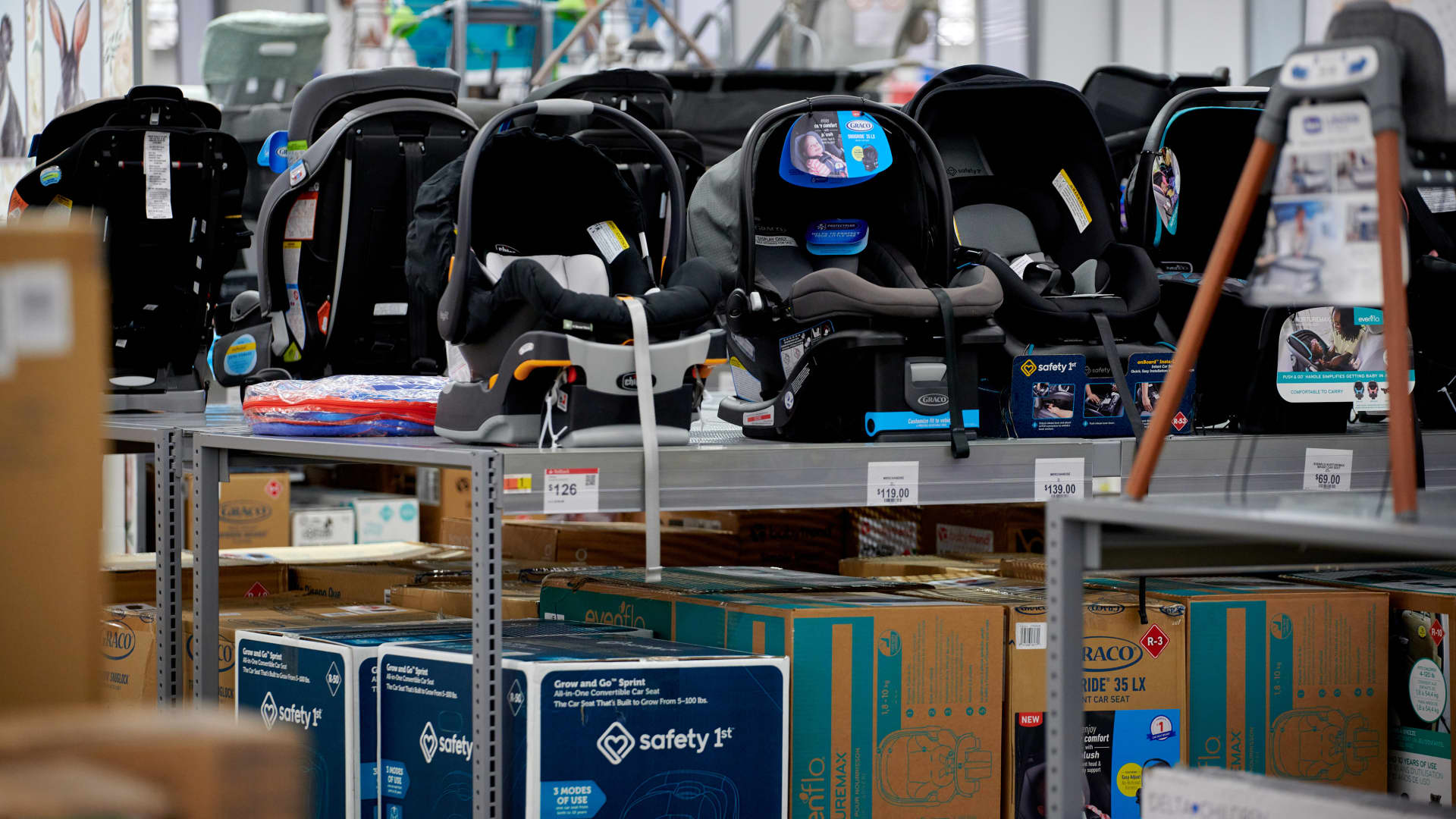Global Trends and Politics
The Tech Industry’s Role in Corporate Social Responsibility: A Case Study

Corporate social responsibility and politics are increasingly intertwined, with companies facing growing pressure to prioritize social and environmental concerns alongside profits. In recent years, the tech industry has come under scrutiny for its role in addressing global challenges, from climate change to social inequality. As the sector continues to shape our world, its commitment to corporate social responsibility (CSR) is more crucial than ever.
Understanding Corporate Social Responsibility in the Tech Industry
The tech industry’s impact on society is multifaceted, with both positive and negative consequences. On one hand, technology has revolutionized the way we live, work, and communicate, driving economic growth and innovation. On the other hand, the sector’s environmental footprint, labor practices, and data management have raised concerns about its social responsibility.
Environmental Impact
The production and disposal of electronic devices, data centers, and network infrastructure contribute significantly to greenhouse gas emissions, e-waste, and energy consumption. For instance, a report by the Natural Resources Defense Council found that the tech industry’s carbon footprint is projected to exceed 2.3 billion metric tons by 2025, equivalent to the annual emissions of 485 million cars. Companies like Google, Amazon, and Microsoft have responded by investing in renewable energy sources, such as solar and wind power, to reduce their environmental impact.
Labor Practices
The tech industry has faced criticism for its labor practices, including poor working conditions, low wages, and limited benefits for workers in supply chains. In 2020, an investigation by the Verge revealed that Amazon warehouse workers were subjected to grueling conditions, with some employees forced to work long hours without adequate breaks or compensation. In response, companies like Apple and Samsung have implemented codes of conduct and auditing programs to ensure fair labor practices in their supply chains.
Data Management
The tech industry’s handling of user data has become a major concern, with high-profile breaches and scandals highlighting the need for greater transparency and accountability. In 2018, the Cambridge Analytica scandal revealed that Facebook had allowed a third-party firm to harvest the data of millions of users without their consent. Since then, companies like Facebook and Google have introduced new data protection policies and tools to give users greater control over their personal information.
Case Study: Microsoft’s Corporate Social Responsibility Initiatives
Microsoft is a prime example of a tech company that has prioritized corporate social responsibility. The company has set ambitious goals to reduce its environmental impact, including a pledge to become carbon neutral by 2030. Microsoft has also invested in initiatives to promote digital inclusion, such as its Airband Initiative, which aims to expand broadband access to rural communities.
Environmental Sustainability
Microsoft has implemented a range of environmental sustainability initiatives, including the use of renewable energy sources, energy-efficient data centers, and sustainable packaging. The company has also developed a “circular economy” approach, which aims to reduce waste and promote the reuse and recycling of products. For example, Microsoft’s “Surface Laptop” is designed to be easily recyclable, with a modular design that allows components to be easily replaced or reused.
Digital Inclusion
Microsoft has also prioritized digital inclusion, recognizing that access to technology is essential for social and economic participation. The company’s Airband Initiative aims to expand broadband access to rural communities, where internet connectivity is often limited. Microsoft has partnered with local organizations and governments to provide affordable internet access, digital skills training, and devices to underserved communities.
Challenges and Opportunities
Despite the progress made by companies like Microsoft, the tech industry still faces significant challenges in implementing corporate social responsibility initiatives. One major obstacle is the tension between profitability and social responsibility, as companies may be reluctant to invest in initiatives that do not generate immediate returns. However, there are also opportunities for innovation and growth, as companies that prioritize CSR can enhance their reputation, attract talent, and drive long-term sustainability.
Regulatory Frameworks
Regulatory frameworks can play a crucial role in promoting corporate social responsibility in the tech industry. Governments and international organizations can establish standards and guidelines for environmental sustainability, labor practices, and data management. For example, the European Union’s General Data Protection Regulation (GDPR) has set a new standard for data protection, with companies facing significant fines for non-compliance.
Stakeholder Engagement
Stakeholder engagement is critical to the success of corporate social responsibility initiatives. Companies must engage with employees, customers, investors, and civil society organizations to understand their concerns and priorities. This can involve regular reporting, transparency, and accountability mechanisms, as well as collaborative initiatives to address social and environmental challenges.
Conclusion
The tech industry has a critical role to play in promoting corporate social responsibility, from environmental sustainability to digital inclusion. Companies like Microsoft have demonstrated that it is possible to prioritize social responsibility while driving innovation and growth. However, there are still significant challenges to overcome, from regulatory frameworks to stakeholder engagement. As the sector continues to shape our world, its commitment to CSR will be essential for creating a more sustainable and equitable future.
Frequently Asked Questions
What is corporate social responsibility?
Corporate social responsibility refers to a company’s voluntary efforts to improve social and environmental well-being, alongside its financial performance.
Why is corporate social responsibility important in the tech industry?
The tech industry has a significant impact on society and the environment, from environmental sustainability to labor practices and data management. Corporate social responsibility is essential for promoting sustainability, transparency, and accountability in the sector.
How can companies prioritize corporate social responsibility?
Companies can prioritize corporate social responsibility by setting clear goals and targets, investing in initiatives that promote environmental sustainability and social inclusion, and engaging with stakeholders to understand their concerns and priorities.
What are some examples of corporate social responsibility initiatives in the tech industry?
Examples of corporate social responsibility initiatives in the tech industry include Microsoft’s Airband Initiative, Google’s renewable energy investments, and Apple’s labor practices auditing program.
How can regulatory frameworks promote corporate social responsibility?
Regulatory frameworks can promote corporate social responsibility by establishing standards and guidelines for environmental sustainability, labor practices, and data management. This can include laws, regulations, and international agreements that encourage companies to prioritize social responsibility.
Global Trends and Politics
Baby items get pricier, congressional report says

Introduction to Tariff Policies and Baby Gear
The cost of some baby gear has risen in recent weeks due to President Donald Trump’s tariff policies, according to a new congressional report. The report analyzed the prices of five common items bought for babies and found that they have increased by 24%, or by $98 combined, between April 1 and June 9.
Impact of Tariff Policies on Baby Gear
The analysis tracked the prices of five popular baby gear categories: car seats, bassinets, strollers, high chairs, and baby monitors. It used data from baby registry website Babylist to determine the price increases. The findings show that new parents are facing higher prices for essential items, which can be a significant burden on their budgets.
Companies’ Responses to Tariff Policies
Some companies have said they will work to mitigate the impact of the levies and offset the costs to consumers, while others, including Best Buy and Costco, have said they already raised some prices. Walmart and Target said they plan to hike prices on some items. Baby gear sold in the U.S. is specifically at risk of tariff impact because 97% of strollers and 87% of car seats are manufactured in China, according to Babylist.
Price Increases for Specific Baby Gear
The committee’s report tracked the prices of the most popular Amazon listings for products from five of Babylist’s categories of baby goods. The Amazon bestsellers included items from brands Graco, AirClub, Summer by Ingenuity, Evenflo, and HelloBaby. The report measured the price increases over time using the price-checking websites Keepa.com and Camelcamelcamel.com. Of the five items studied, the Graco car seat saw the highest price increase, with a 44.8% increase over the measured time period.
Response from Graco Owner Newell Brands
A spokesperson for Graco owner Newell Brands told CNBC in a statement that the report appears to have started collecting data on the Graco car seat during a period when retailers were running a promotion. The spokesperson said the car seat was on sale on April 1, so the price was hiked by about $20, not by $43, as suggested in the report. Executives from Newell said during an April 30 earnings call that the company had raised prices on its baby gear by about 20%.
Broader Impact of Tariff Policies on Baby Gear
A broader Babylist analysis of 11 categories, including products like bouncers and diaper bags, found that costs increased by an average of $400 combined between March 10 and June 3. Those higher prices for new parent households in the U.S. amount to $875.2 million in total additional costs, according to the analysis and based on data from the American Community Survey. The study found particular risk for parents in California, with parents in that state collectively facing a potential $100.3 million in additional baby costs this year.
Conclusion
The tariff policies implemented by President Donald Trump have resulted in significant price increases for baby gear, making it more difficult for new parents to afford essential items. The report’s findings highlight the need for policymakers to consider the impact of tariff policies on consumers, particularly those with limited budgets. As the trade tensions between the U.S. and China continue to escalate, it is likely that the prices of baby gear will continue to rise, affecting many families across the country.
FAQs
Q: What is the main reason for the price increase in baby gear?
A: The main reason for the price increase in baby gear is the tariff policies implemented by President Donald Trump.
Q: Which baby gear categories have been most affected by the tariff policies?
A: The baby gear categories most affected by the tariff policies are car seats, bassinets, strollers, high chairs, and baby monitors.
Q: How much have the prices of baby gear increased since April 1?
A: The prices of baby gear have increased by 24%, or by $98 combined, since April 1.
Q: Which state is most affected by the price increase in baby gear?
A: California is the state most affected by the price increase in baby gear, with parents facing a potential $100.3 million in additional baby costs this year.
Q: What is the total additional cost of baby gear for new parent households in the U.S.?
A: The total additional cost of baby gear for new parent households in the U.S. is $875.2 million.
Global Trends and Politics
Amex Platinum, Chase Sapphire Get 2025 Refresh

Introduction to the Premium Credit Card Rivalry
The long-running rivalry between the country’s top premium credit cards is about to heat up again. JPMorgan Chase announced last week that a refresh of its Sapphire Reserve — the travel and dining rewards card that went viral when it arrived in 2016 — was imminent.
Response from American Express
In response, American Express on Monday said that "major" changes were coming to its consumer and business Platinum cards later this year. While short on details, the New York-based card company said that its update would be its largest ever investment in a card refresh. "We are going to double down on the things we know based on the data that our card members love," said Amex President of U.S. Consumer Services Howard Grosfield in an interview. "But more importantly, we’ll bring a whole bunch of new and exciting benefits and value that will far, far, far exceed the annual fee."
History of Premium Credit Cards
American Express pioneered the premium credit card space decades ago with cards that bundled perks at airlines and hotels with access to its own network of high-end airport lounges. But JPMorgan shook up the industry in 2016, igniting stiff competition among card issuers with a lavish sign-on bonus and other incentives for its Sapphire card.
Expected Changes and Updates
The expectation among industry experts is that both companies will offer ever-longer lists of perks in travel, dining and experiences, while potentially raising their annual fees, as has been the pattern with recent updates. The Platinum card has a $695 annual fee, while the Sapphire has a $550 fee. On Reddit and other forums, card users circulated rumors that JPMorgan was hiking the annual fee on its Sapphire product to $795. A JPMorgan spokesperson declined to comment.
Launch of the New Platinum Card
The new Platinum card will launch in the fall, Grosfield said. The updates from both companies are expected to further intensify the competition in the premium credit card market.
Conclusion
The rivalry between JPMorgan Chase and American Express is set to heat up with the upcoming refresh of their premium credit cards. With expected updates and new benefits, card users can look forward to enhanced perks and services. However, the potential increase in annual fees may be a concern for some users.
FAQs
Q: What changes can we expect from the refresh of the Sapphire Reserve and Platinum cards?
A: The changes are expected to include new benefits and perks in travel, dining, and experiences, as well as potential increases in annual fees.
Q: When will the new Platinum card launch?
A: The new Platinum card will launch in the fall.
Q: How much is the annual fee for the Platinum card?
A: The annual fee for the Platinum card is $695.
Q: How much is the annual fee for the Sapphire card?
A: The annual fee for the Sapphire card is $550.
Q: Are there rumors of a price increase for the Sapphire card?
A: Yes, there are rumors that JPMorgan may hike the annual fee on its Sapphire product to $795, but a JPMorgan spokesperson declined to comment.
Global Trends and Politics
Battle Over Jimmy Buffett Estate

A court battle over the late singer Jimmy Buffett’s $275 million estate has highlighted the growing litigation over the trillions of dollars in wealth being passed down to spouses and families, experts said. Jimmy Buffett’s widow, Jane Buffett, filed a petition last week in a Los Angeles court to remove her co-trustee, Richard Mozenter, from the marital trust created to support her after the singer’s death in 2023.
Background of the Dispute
Jane Buffett, who married Jimmy in 1977, alleged that Mozenter has been “openly hostile and adversarial” toward her and has refused to give her details on the trust and its financials. She alleged Mozenter is collecting “excessive fees” of $1.7 million a year and that he’s mismanaging the trust assets, projecting income of only $2 million, implying annual returns of less than 1%. Mozenter has filed his own lawsuit in Palm Beach County, Florida, alleging that Jane has been “completely uncooperative” in his efforts to manage the trust.
Jimmy Buffett’s Estate Plan
Jimmy Buffett planned carefully for the afterlife. His will, first written more than 30 years ago and amended in 2017 and again in 2023, directed that most of his assets be placed in a marital trust for Jane. The trust was created “for the wife’s sole benefit of her lifetime,” according to legal filings. The three children they shared — Savannah, Delaney, and Cameron — are the so-called remainder beneficiaries of the marital trust, which means they will receive any remaining assets left after Jane’s death.
Assets in the Estate
The assets Buffett left were substantial. A successful businessman and entrepreneur, Buffett built a brand empire and merchandising business that far surpassed his song rights and touring. According to the filings, the assets in the estate included $34.5 million of real property; $15 million of equity in a company called Strange Bird Inc., which held Buffett’s interest in various planes; $2 million in musical equipment; $5 million in vehicles; and $12 million in other investments. One of the largest assets is Buffett’s stake in Margaritaville, the chain of restaurants, bars, hotels, and merchandising that commercialized the Buffett lifestyle.
The Role of Co-Trustees in Estate Planning
Trust lawyers said the case is part of a growing wave of lawsuits related to inheritances and trusts. Over $100 trillion of wealth is expected to be passed down from older generations to spouses and families over the next 25 years, according to Cerulli Associates. More wealth being passed down means more litigation, since families often fight over who gets what. The Buffett case has reflected a different, but equally common, source of disputes: dueling trustees.
Potential Outcomes of the Case
Since the lawsuits were filed in different states, courts will first have to decide where the case will be heard. After that, a judge will start arguments and ultimately decide a path forward. Attorneys said judges have typically sided with the outside trustee (in this case Mozenter). Yet increasingly, they have been siding with spouses — which could mean Mozenter is removed. More likely, attorneys said, a judge will determine that the relationship between Mozenter and Jane is unworkable and name a new, professional or corporate trustee from a trust company or bank to replace them both.
Lessons for Families Planning Wealth Transfers
The Buffett case offers two important lessons for families planning wealth transfers. First, they said wealth holders should communicate the plans for their estates before they die so no one is surprised. If Buffett had explained the co-trustee roles to both Jane and Mozenter, perhaps tensions would have been minimized. The second lesson is that friends or business associates don’t always make good trustees. While today’s wealthy often name a trusted friend to a family trust, the trustee may have a different relationship with the beneficiary and can see themselves as carrying out the wishes of the descendant — which is not the job of a trustee.
Conclusion
The Jimmy Buffett estate battle highlights the importance of careful estate planning and communication. As the case moves forward, it will be important to watch how the court navigates the complex issues involved. The outcome of the case will have significant implications for the management of the Buffett estate and the distribution of its assets.
FAQs
Q: What is the estimated value of Jimmy Buffett’s estate?
A: The estimated value of Jimmy Buffett’s estate is $275 million.
Q: Who are the beneficiaries of the marital trust created by Jimmy Buffett?
A: The beneficiaries of the marital trust are Jane Buffett, Jimmy’s widow, and their three children, Savannah, Delaney, and Cameron, who are the remainder beneficiaries.
Q: What is the role of a co-trustee in estate planning?
A: A co-trustee is appointed to manage the trust alongside the beneficiary, in this case, Jane Buffett. The co-trustee is responsible for making decisions about the management of the trust assets.
Q: What are the potential outcomes of the case?
A: The potential outcomes of the case include the removal of Richard Mozenter as co-trustee, the appointment of a new professional or corporate trustee, or a continuation of the current arrangement with modifications.
Q: What lessons can be learned from the Jimmy Buffett estate battle?
A: The Jimmy Buffett estate battle highlights the importance of careful estate planning, communication, and the selection of appropriate trustees. It also emphasizes the need for clear roles and responsibilities for co-trustees and the importance of considering the impact of estate planning decisions on family relationships.
-

 Career Advice6 months ago
Career Advice6 months agoInterview with Dr. Kristy K. Taylor, WORxK Global News Magazine Founder
-

 Diversity and Inclusion (DEIA)6 months ago
Diversity and Inclusion (DEIA)6 months agoSarah Herrlinger Talks AirPods Pro Hearing Aid
-

 Career Advice6 months ago
Career Advice6 months agoNetWork Your Way to Success: Top Tips for Maximizing Your Professional Network
-

 Changemaker Interviews5 months ago
Changemaker Interviews5 months agoUnlocking Human Potential: Kim Groshek’s Journey to Transforming Leadership and Stress Resilience
-

 Diversity and Inclusion (DEIA)6 months ago
Diversity and Inclusion (DEIA)6 months agoThe Power of Belonging: Why Feeling Accepted Matters in the Workplace
-

 Global Trends and Politics6 months ago
Global Trends and Politics6 months agoHealth-care stocks fall after Warren PBM bill, Brian Thompson shooting
-

 Global Trends and Politics6 months ago
Global Trends and Politics6 months agoUnionization Goes Mainstream: How the Changing Workforce is Driving Demand for Collective Bargaining
-

 Training and Development6 months ago
Training and Development6 months agoLevel Up: How Upskilling Can Help You Stay Ahead of the Curve in a Rapidly Changing Industry









